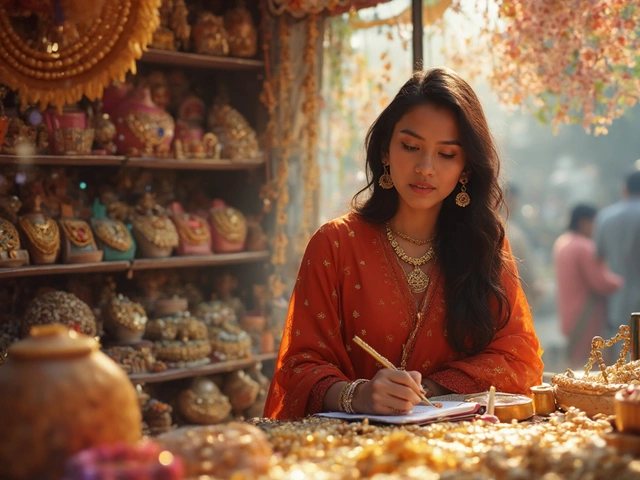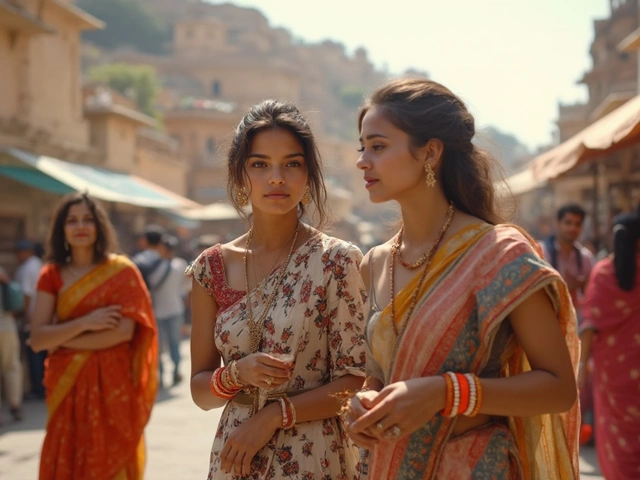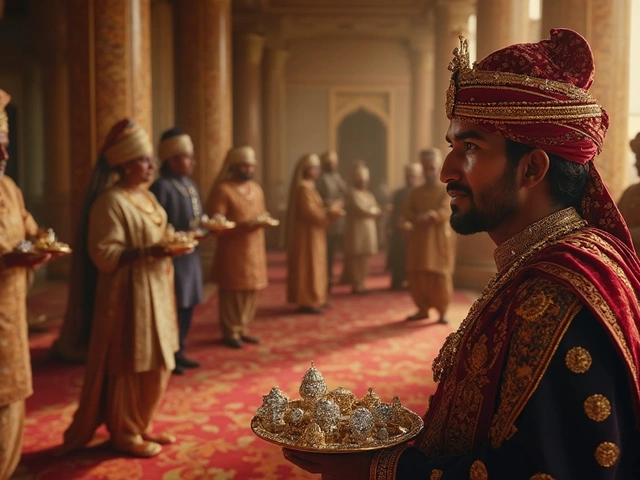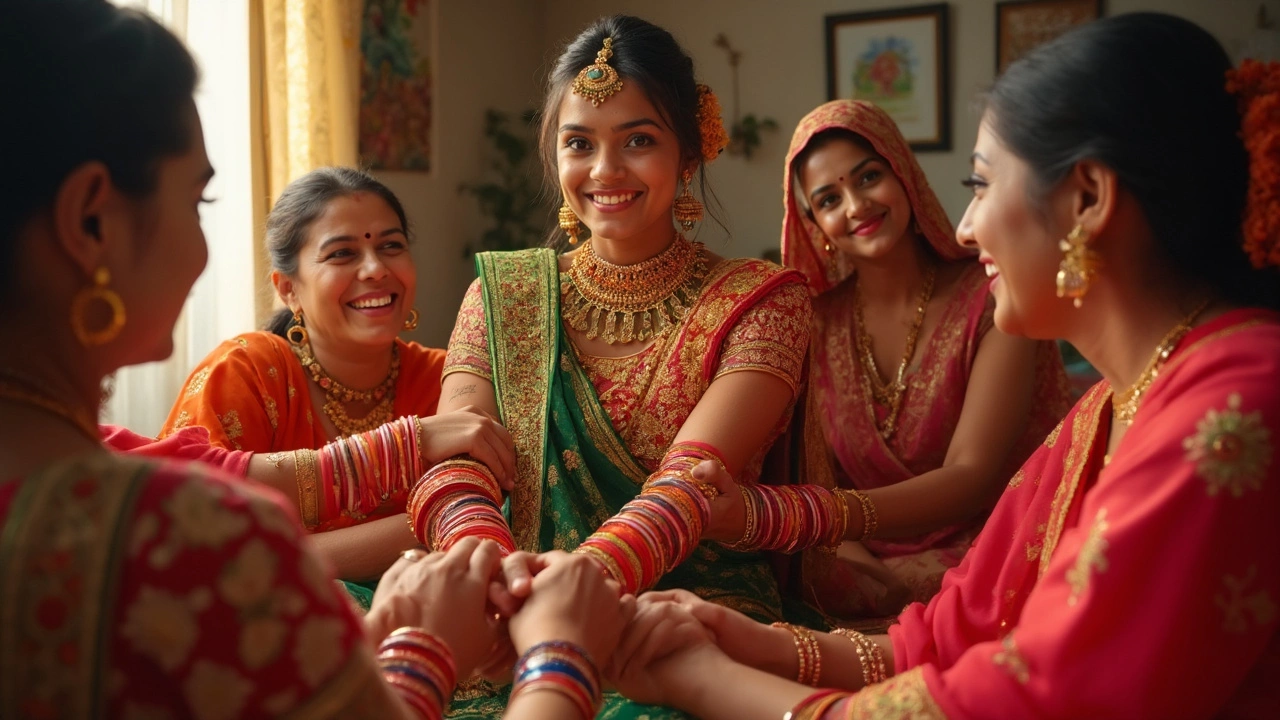
Ever seen a bride’s wrists weighed down with sparkling bangles, and wondered: how many is too many, or even enough? In Indian weddings, it’s not just about decking out with jewelry—bangles tell a story, and they’re loaded with tradition, superstition, and style. Sometimes, the number of bangles isn’t just about fashion—it's family elders debating, mothers counting, grandmothers remembering their own weddings. But when it comes down to it, is there a magic number, or is it all just a matter of personal taste?
The Roots of Bridal Bangles: More Than Just Glamour
Bangles are the oldest form of jewelry in India. Archaeologists have found them in the Indus Valley Civilization, dating back more than 5,000 years. Unlike necklaces or earrings that come and go from fashion, bangles have stuck around, probably because they blend belief with beauty so seamlessly. In most Indian weddings, bangles aren’t just an accessory. They symbolize marriage, health, prosperity, and sometimes, the actual happiness of the new couple. Some even say bangles’ gentle clinking wards off negative energy. That’s why you’ll spot brides with wrists stacked high, the sound following them wherever they go.
Dive into old customs, and you’ll find that every color and material carries its own vibe. Red and green bangles, for instance, are seen as symbols of fertility and good luck especially in North India, while yellow and gold bring thoughts of prosperity and happiness. Punjabi brides swear by their red and white chooda—usually 21 to 51 bangles on each arm, all gifted by her maternal uncle in a special ceremony. Meanwhile, in Maharashtra, glass bangles in green and gold dominate. Down in South India, gold reigns supreme, loaded with temple designs and age-old family patterns, often paired with plain glass bangles for extra noise and meaning.
Of course, bangles aren’t just for the bride. Family members often wear sets that match or complement the bride’s, creating an entire chorus of color and clink. This isn’t just about pretty wrists—the music of glass, gold, and metal is meant to fill a new home with positivity and cheer.
The Number Game: Is There a Perfect Count?
So, how many bangles should a bride wear in India? There isn’t really one answer, because this is where tradition, region, and individual style collide. Some customs are dead set on odd numbers, others on specific ceremonial numbers, and for many, it’s about how comfortably you can move your hands! Check out this quick breakdown of specific traditions across India:
| Region/Community | Bangle Count | Type/Colors |
|---|---|---|
| Punjabi | 21-51 per arm | Red & White Chooda (Ivory/Plastic) |
| Maharashtrian | Up to 18 per arm | Green glass with gold "patlya" & "tode" |
| Gujarati | Varies (usually even number) | Ivory or glass, red, green, ivory |
| Bengali | 2 main bangles | Shakha (conch shell), Pola (red coral) |
| South Indian | Usually 12-48 | Gold, green, and sometimes red glass |
In most cases, North Indian brides wear more—often up to mid-arm, making for a dramatic, lavish look. In Bengali weddings, you’ll notice less is more: only two bangles, but each with powerful symbolism. In Maharashtra, the focus is strictly on odd numbers—a total of 17, 21, or another lucky count, with gold and green stacked alternately.
Here’s something worth knowing: for some brides, family elders actually count every single bangle, because for them, even numbers are considered unlucky. In the case of chooda, tradition demands an odd-numbered stack on each wrist, and it’s not to be removed for up to a year after marriage. Meanwhile, some cosmopolitan brides just throw the rulebook out, choosing as many—or as few—as they feel like, sometimes mixing glass, metal, and even plastic for a statement look.
The real trick is to balance tradition with comfort. Too many heavy glass bangles can leave wrists aching by the end of the day! Brides often wear large stacks (as tradition prefers) during the wedding, then switch to lighter, smaller sets for later ceremonies or parties.
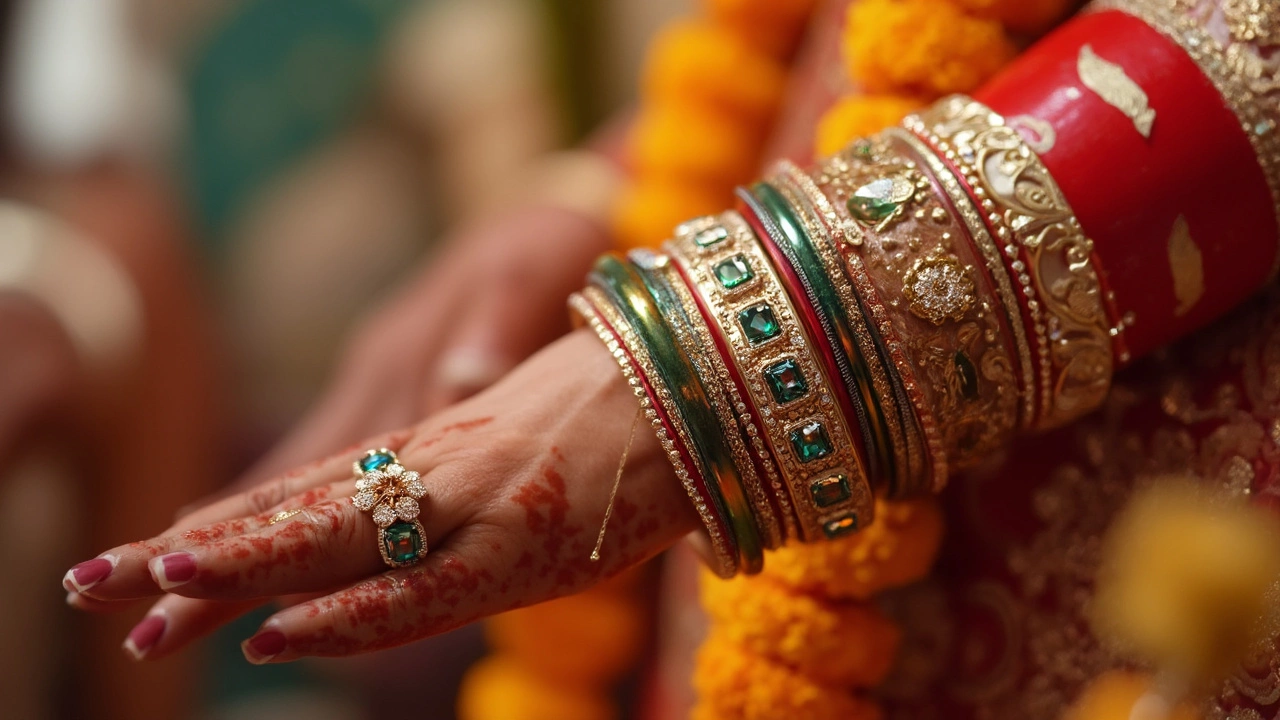
Colors, Materials, and What They Mean
Every color and material has a backstory, and this is where bangles really get interesting. Here’s how it usually works:
- Red: The classic symbol for married women, worn almost everywhere, and believed to attract happiness and prosperity.
- Green: Fertility, good luck, and new beginnings, especially popular in Maharashtra and parts of South India.
- White/Ivory: Purity and new starts. White bangles paired with red (the chooda) are a Punjabi bride's must-have.
- Gold: Timeless wealth, power, and family legacy. Gold bangles are less likely to ever go out of fashion, and they double as investment pieces.
- Glass: Fragile but noisy; they say the sound brings luck, which is why mothers in law sometimes gift new sets after old ones break post-wedding!
It’s not just colors. Shape and material matter, too. In South India, antique gold temple bangles are often passed from one generation to the next. In Bengal, made-from-shell "shakha" and deep red coral "pola" keep tradition alive.
A lot of brides these days blend metals, stacking gold with glass, antique silver with resin, and even adding trendy enamel pieces for a pop of fun. You’ll see everything from Rajasthani bright lac bangles to Hyderabad’s stone-studded kadas in modern bridal sets.
If you want to stay rooted but look a bit different, take a cue from real weddings—many brides jazz it up with a centerpiece kada (a thick, carved bangle) or a pair of glittery bangles right in the middle of the stack. Even brands are catching on, offering pre-designed bridal sets that already follow regional color and count traditions, so you don’t have to piece it together from scratch.
Practical Tips to Pick Your Bridal Bangles
Bangles look gorgeous in photos, but let’s be real—they can be a pain to wear the whole day, especially if you go overboard. Here are a few tips most real brides wish they’d known sooner:
- Bangle size matters: Always try them on with the outfit. Wedding day nerves can make your hands swell.
- Mix materials: Glass bangles look pretty but break easily. Layering them with sturdier metal or plastic ones helps avoid accidental shattering.
- Consider allergies: Some cheap metal bangles can irritate your skin, especially if you’re sweating or wearing them for hours.
- Don’t forget tradition: Ask your family about must-have numbers, types, or special ceremonial gifts. You don’t want drama the morning of!
- Bangle kits: Brides in bigger cities often buy bangle kits that include everything for the ceremony AND smaller, lighter sets for post-wedding parties.
- Pack replacements: Glass bangles break, especially when you’re touching everyone’s feet. Always pack extras in your wedding kit.
- If the stack feels overwhelming, wear the full set for photos and the main ceremony, then quietly swap for a lighter set for the reception.
Remember those viral wedding videos where brides accidentally snap a whole row of bangles during a ritual or while dancing? That happens more often than you’d think, especially if you’re mixing delicate glass pieces with heavier gold or metal kadas. It’s always smarter to blend fragile with sturdy so you keep the look but don’t have to worry about all the clinking turning into crashing!
And yeah, there’s always a battle of taste. Some families love mega stacks, arm to elbow. Others prefer sleek, minimal looks that let the bride’s other jewelry shine. If you’re the bride, it’s worth asking elders for specific rituals or numbers—but don’t be afraid to set your own style rules, too.
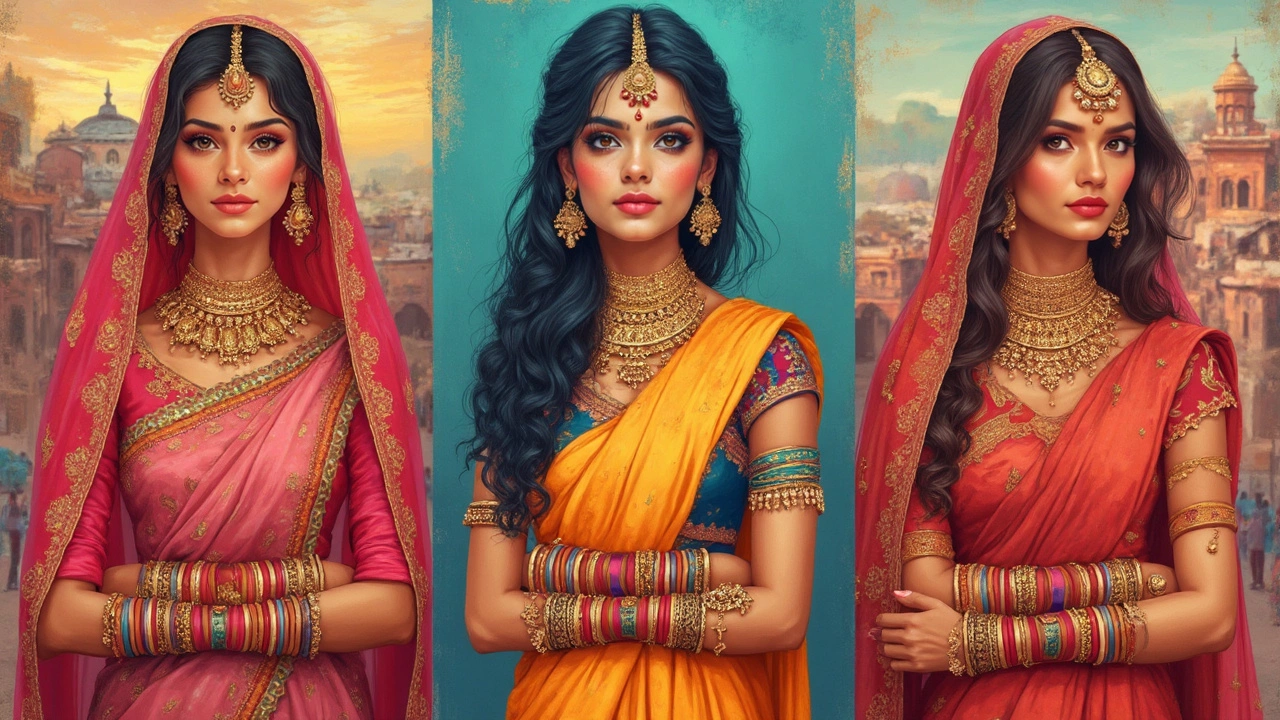
Keeping Tradition (and Personal Style) Alive
There’s nothing quite like the mood bangles bring to a wedding. Even if you don’t follow every old-school rule, those stacks are a clear sign you’ve stepped into a new chapter. In 2025, lots of Indian brides are making their own playbook: some double-stack on one arm, blend family heirlooms with trendy enamel bangles, or even commission custom sets with special engravings for the big day.
Old traditions are holding their ground, but designers know brides want both comfort and flair. Pre-matched sets, custom-made color combos, and filtered Instagram inspiration boards are getting more popular. There are also eco-friendly bangles now—made with sustainable materials for brides who care about reducing their wedding’s carbon footprint.
Bangles can be so much more than a tradition—they’re a chance to tell your story, show off heirlooms, and shake up old customs without losing their heart. Whether you end up with 2, 12, 21, or a whole sleeve, the secret is to pick what feels right, fits well, and blends family wisdom with your own flair.
So, how many bangles should a bride wear in India? However many feels right for her. Traditions still count for a lot, so it does help to ask around and know the numbers your family expects, but don’t let anyone cramp your style or comfort. In the end, those bangles should feel like a celebration of you—a little noisy, beautifully bold, and sparkling with meaning.
